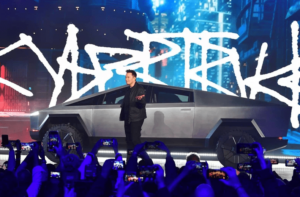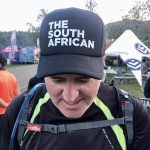
Can Elon Musk’s Tesla robotaxi unveiling meet expectations?
Following years of promoting Tesla’s capabilities in autonomous driving, Elon Musk is gearing up to host a highly anticipated robotaxi event.

After years of promoting Tesla’s advancements in autonomous driving, Elon Musk is preparing to host a highly anticipated robotaxi event, met with both excitement and skepticism.
‘We, Robot’
The Tesla CEO has so far offered few details about exactly what will be unveiled at Thursday’s event, dubbed “We, Robot,” which will take place at Warner Brothers studio in Los Angeles.
Tesla watchers expect the company to reveal a prototype of its robotaxi, intended for autonomous transport.
Other companies, such as Google’s Waymo and General Motors Cruise, have operated heavily regulated pilot programs for a few years already.
Musk, who has become a vocal supporter of Republican presidential candidate Donald Trump, has insisted Tesla’s offering will be the best autonomous vehicle on the market even if it’s not the first.
Musk pushed back the date of the event, which was originally planned for August, “to make some important changes that I think would improve the vehicle,” he said in July, adding that Tesla would show “a couple of other things” beside the robotaxi.
Remains unseen by most of the general public
He shrugged off regulatory questions about a technology venture that has so far only been demonstrated on a limited terrain and remains unseen by most of the general public.
“Once we demonstrate that something is safe enough or significantly safer than human, we find that regulators are supportive of deployment of that capability,” Musk said in July.
Musk has a history of making bold predictions about autonomous vehicles, saying conventional automobiles will one day be as obsolete as a horse and buggy.
But the Tesla CEO has repeatedly pushed back the timeframe for self-driving technology, after previously predicting the company would achieve the breakthrough by 2018.
Some are taking a wait-and-see approach to Thursday’s Tesla event.
“We believe widescale Tesla robotaxi deployment is unlikely within the coming years,” said a note from UBS last month.
“That is not to say Tesla isn’t making technological progress, but Tesla needs to show that the tech is ready and safe, deal with a myriad of local regulations and (potentially) figure out logistics and operations of a transportation network company.”
On the bullish side, Wedbush predicted Thursday’s event will be “seminal and historical day” for Tesla, ushering in a “new chapter of growth” for autonomous technology.
Overtaking rivals?
Boosters of autonomous driving have said the technology could lead to fewer accidents, arguing it would offer greater freedom to people who are older or physically impaired.
Cruise and Waymo began operating in San Francisco in 2021 – though Cruise shuttered its San Francisco driving program in late 2023 after an accident.
But the company resumed operations in Arizona in April under a service that includes a driver as a backup. GM has said it is holding off on a driverless version due to speed regulatory approval.
Meanwhile, Alphabet-owned Waymo opened up service to the general public in June after previously restricting the availability.
Operating modified Jaguar vehicles, Waymo now offers service comparable to that of Uber or Lyft. Besides some locals who utilise the service in San Francisco, the vehicles have become a touristic attraction.
Waymo has over 700 vehicles in its fleet, about 300 in San Francisco and the rest in Phoenix, Los Angeles and Austin, Texas where it has added service, the company said.
On the July earnings conference call, Musk said Tesla’s efforts would ultimately prove superior to that of rivals.
He said GM was “blaming regulators” for technology that was “not at par.” Musk said Waymo’s technology was “quite fragile” and not able to scale because it was a “very localized solution.”
Tesla’s venture, in contrast, is a “general solution that works anywhere,” Musk said bullishly.
“It would work even on a different earth.”
